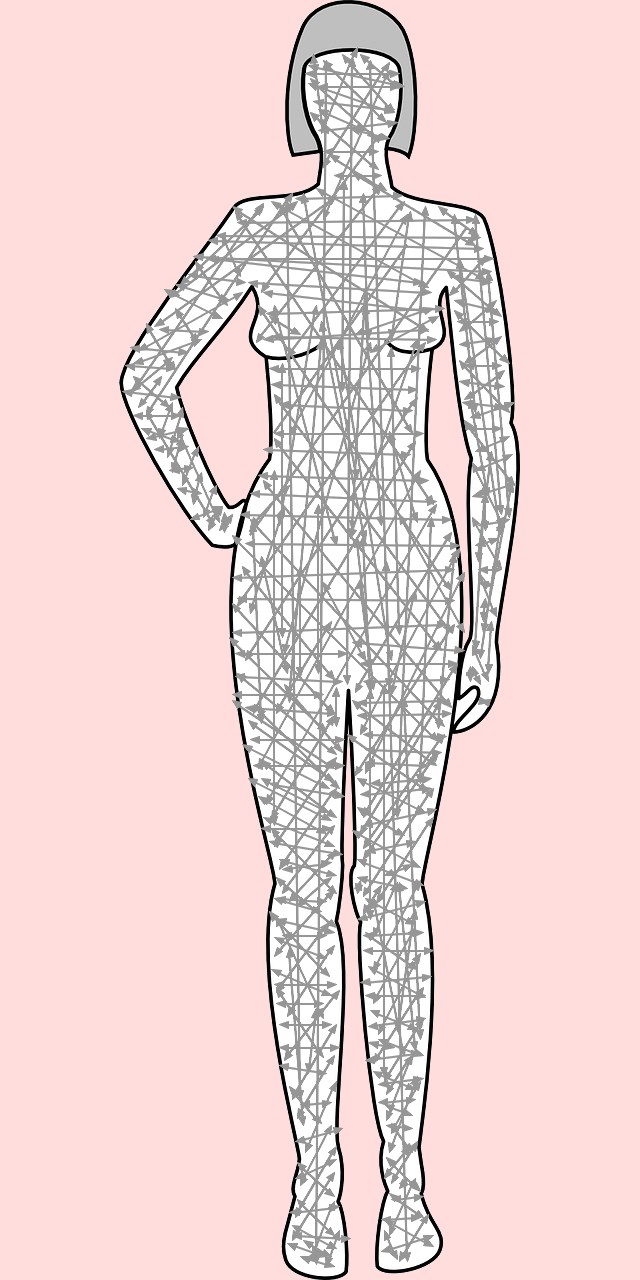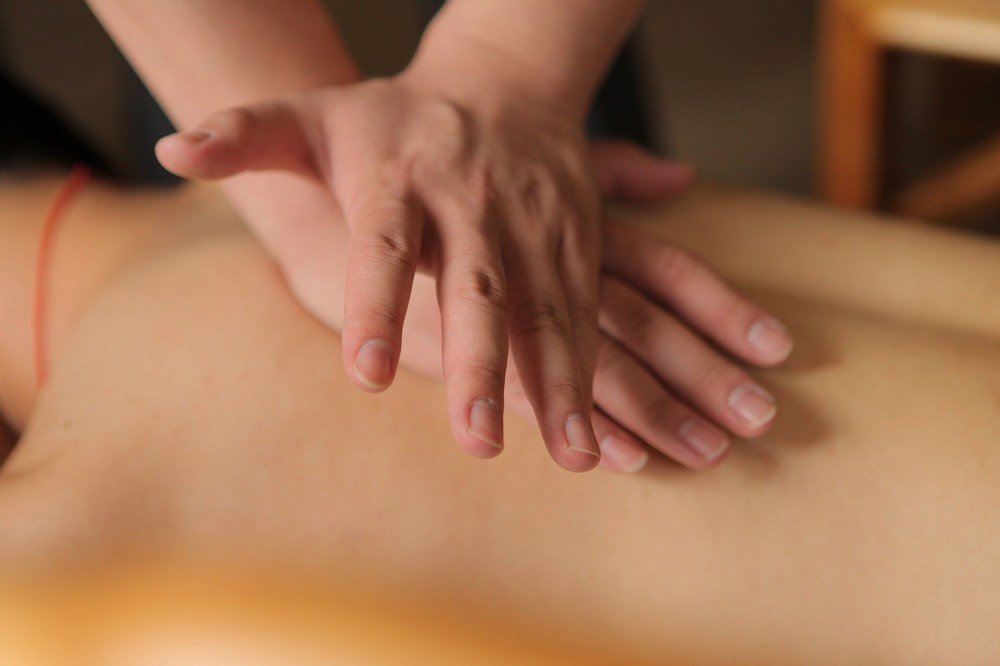Myofascial Pain and Fibromyalgia
Myofascial pain and Fibromyalgia go hand in hand unfortunately. Fascia pain in people with Fibromyalgia is very common. You may be unfamiliar with the word Fascia, but if you have Fibromyalgia you need to realize how important it is.
You may have heard of or suffered from Plantar fasciitis. Plantar fasciitis is a common condition in people with Fibromyalgia. Plantar fasciitis is inflammation of the fascia which is found under the foot.
But I believe that other common conditions that people with Fibromyalgia also suffer from such as Costochondritis which is a painful sternum and rib cage is due to painful fascia in the chest area.
Similarly Carpal Tunnel Syndrome which again is extremely common in people with Fibromyalgia is simply painful fascia in the hand and wrist areas. Likewise a painful jaw known as Temporomandibular Joint Dysfunction (TMJ or sometimes TMD), pains in the hands and feet, frozen shoulder, tennis elbow, housemaid’s knee, painful collar bone, painful shoulder blade, painful hips and pelvic pain etc. can all be explained by the fascia pain that surrounds those areas.
So could it be that the many and varied seemingly unrelated ailments, conditions and symptoms of Fibromyalgia are just stuck, stagnate and strangulated fascia? I think so.
What is Fascia?
 Myofascial pain and Fibromyalgia
Myofascial pain and FibromyalgiaFascia looks a bit like cling film and it does a similar job. It envelops every muscle, organ, bone and nerve fibre throughout our entire bodies.
Fascia is continuous and uninterrupted throughout the body from head to toe. Some have likened fascia to a whole body collagen matrix which the fluids of the body flow through.
If you look at raw meat, you can see an almost transparent layer of fascia surrounding a chicken breast for example. It isn’t fat, it isn’t muscle, it isn’t bone – it is one form of connective tissue.
It is the stretchy glue that clings to and wraps around all those things.
Unfortunately for people with Fibromyalgia there seems to be a build up of this type of connective tissue. And this is why Myofascial pain and Fibromyalgia seem to go together.
The fascia becomes stiff, knotted, tightened, taut and more importantly very painful.
This is a great video entitled Fascia and The Mystery of Chronic Pain and it explains why Myofascial pain and Fibromyalgia is common.
"The Fascia facilitates all communications between every single body part. There are 6 times more nerve receptors in the Fascia than in the muscles, Fascia exists in solid form, in liquid form (extra-cellular fluid) and communication in the Fascia is 15 times faster than in the nervous system.
This is where we have our entire intelligence, intuition and feeling, an extension of the brain, if you will – this is what makes the body one whole, and not a lot of parts." Atlasbalans
Myofascial Pain and Fibromyalgia
Fascia has 6 times more pain receptors than muscle, meaning that fascia pain can be very intense. People with Fibromyalgia will have fascia pain in many areas of their bodies.
I believe that the 18 tender points of Fibromyalgia are simply painful fascia areas. But fascia pain in Fibromyalgia sufferers is not just confined to these tender points. I believe most of the widespread pain felt by people with Fibromyalgia is fascia pain.
And because fascia is so widespread throughout the body, fascia pain will also be widespread. This explains why people with Fibromyalgia have widespread pain that comes and goes. For example my feet and hands would hurt on some days, while my shins and elbows could hurt on other days. Remember that fascia is found in and around every muscle, organ, bone and nerve fibre throughout our entire bodies.
Please bear in mind that trigger points are not the same as Fibromyalgia tender points.
Traditional Chinese Medicine
It is believed that we have energy channels running throughout the fascia. In Chinese medicine these energy channels are known as meridians, in Indian medicine they are known as Nadis and in Western medicine they are termed as nerve endings.
Dr. Daniel Keown bridges the divide between Traditional Chinese Medicine and Western Medicine. Trained in both disciplines he is the author of ‘The Spark in the Machine: How the Science of Acupuncture Explains the Mysteries of Western Medicine’
His book explains how Chinese Medicine can enhance Western Medicine and our understanding of the human body. The concept of Qi is examined and is likened to an energetic electrical spark found in the collagen within the connective tissue or fascia network that surrounds all our muscles, organs, bones, nerve fibres, blood vessels and lymph vessels.
The energetic life force or Qi flows through the fascia which the Chinese name Jing Luo. Jing Luo is also known as meridians.
According to Traditional Chinese Medicine good health can only be maintained or achieved with the free flowing of Qi throughout the meridians.
There are 12 major meridians that are associated with the organs of the body. The meridians are pathways for the Qi to flow through. Along the meridians are a series of acupuncture points or acupoints which can be stimulated by acupuncture needles. Other than needles, pressure can be applied to these points as in acupressure. The aim of acupuncture or acupressure is to balance the flow of Qi so as to maintain or restore good health to the body and mind.
The Key to Finding My Fibromyalgia Cure
I believe that fascia builds up and becomes painful within the fascia itself but also in adjacent muscles and joints.
I also believe that fascia clumps, stiffens, knots and sticks together as a result of poor sleep. Being deprived of good restorative sleep is a universal symptom common to all who suffer Fibromyalgia. Without good restorative sleep we cannot recover, rest, restore or replenish our energy and our health. Our fascia never has the chance to become healthy and become stretchy and flexible.
Secondly I believe fascia hardens, builds up and becomes taut due to limited mobility. As Fibromyalgia sufferers we find we cannot walk as far, climb as high or swim as intensely as others without being severely fatigued by our efforts. A Fibromyalgia flare usually occurs after attempting to do too much. “Too much” can often mean shopping in a supermarket AND going to see a friend. We often have to choose between one or the other.
So a one day spurt of activity of shopping at the supermarket and visiting a friend will leave us in severe pain, extremely fatigued and undoubtedly depressed for several days. So our lack of activity further clumps up our fascia making for a vicious circle of pain, fatigue, depression and lack of restorative sleep.
So, to break free from this vicious cycle we need to take steps to allow our fascia to become healthy once more.

Massage, electric air compression massagers, Chinese cupping and Gua Sha, Rolfing, myofascial release, Yin yoga poses, Qigong fascia release movements and stretches, are all methods we can use to allow our fascia to become healthy. Once our fascia is healthy our pain, fatigue and depression will diminish and hopefully disappear. And because of this our sleep patterns will become improved as we are able to walk, climb, swim just like others. We become able to shop AND meet friends.
Our physical activity will tire us, rather than mental strain exhausting us, and allow the much needed restorative sleep. We will not feel so fatigued throughout the day that we are forced to take naps.
Over a 12 month period I have I had a series of myofascial release sessions, deep tissue massages, Traditional Chinese Medicine treatments including Chinese massage (Tui Na), Chinese cupping, Gua Sha and acupuncture. I have practised daily healing Qigong, stretching and Yin yoga. I have bought and used daily several electric massagers including electric air compression massagers which remarkable results.
I began to sleep better, became stronger, fitter and more willing and able to participate in activities I had long since given up on. Basically I reclaimed my health and my life. I strongly believe that by doing so I had finally found my Fibromyalgia cure and can now say I am free from pain, fatigue and depression at last.
If fascia is allowed to clump, stiffen, knot or stick the result can mean painful joints, muscles and tissues.
To smooth out these painful clumps or knots the fascia needs to be manipulated by intensive stretching for long periods or via Myofascial Release.
I have written much about Myofascial Release and how I believe it was the key to my Fibromyalgia cure.
Here Thomas Myers, sometimes referred to as the Godfather of Fascia, talks us through the basics of Fascia.
More on Myofascial Pain and Fibromyalgia
Myofascial pain syndrome (MPS) and Fibromyalgia are two distinct but related conditions that involve chronic pain and discomfort. While they share similarities, they have different characteristics and diagnostic criteria. Let's explore each condition separately:
Myofascial Pain Syndrome (MPS)
Myofascial pain syndrome refers to the presence of trigger points, which are highly sensitive areas within muscle fibers or fascia (connective tissue) that can cause local or referred pain. These trigger points can develop due to muscle overuse, injury, poor posture, stress, or other factors.
Symptoms of myofascial pain syndrome:
- Persistent or recurring muscle pain.
- Presence of palpable knots or nodules in muscle fibers.
- Limited range of motion.
- Localized or radiating pain when pressure is applied to trigger points.
- Muscle stiffness or weakness.
Treatment options for
myofascial pain syndrome include physical therapy, trigger point injections,
manual therapy techniques (such as massage or myofascial release), medication
(such as nonsteroidal anti-inflammatory drugs or muscle relaxants), and
lifestyle modifications (such as stress management and ergonomic adjustments).
Fibromyalgia and the link with Myofascial Pain
Fibromyalgia is a chronic disorder characterized by widespread musculoskeletal pain, fatigue, sleep disturbances, and heightened sensitivity to pressure or touch. Unlike myofascial pain syndrome, Fibromyalgia does not involve trigger points but affects the entire body.
Symptoms of Fibromyalgia:
- Widespread pain affecting multiple areas of the body for at least three months.
- Fatigue and decreased energy levels.
- Sleep disturbances, including insomnia or non-restorative sleep.
- Cognitive difficulties, commonly referred to as "fibro fog."
- Heightened sensitivity to touch, temperature, or loud noises.
- Headaches, irritable bowel syndrome (IBS), and mood disorders (such as anxiety or depression) are commonly associated with Fibromyalgia.